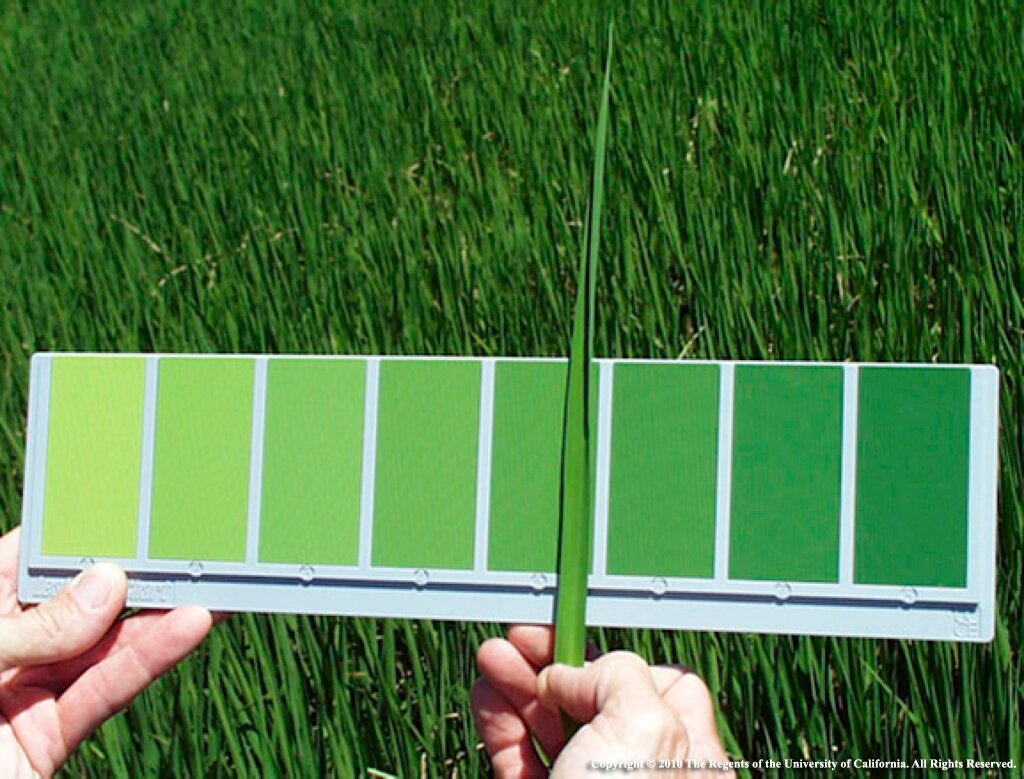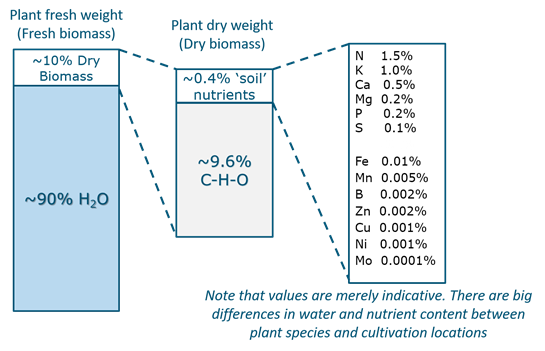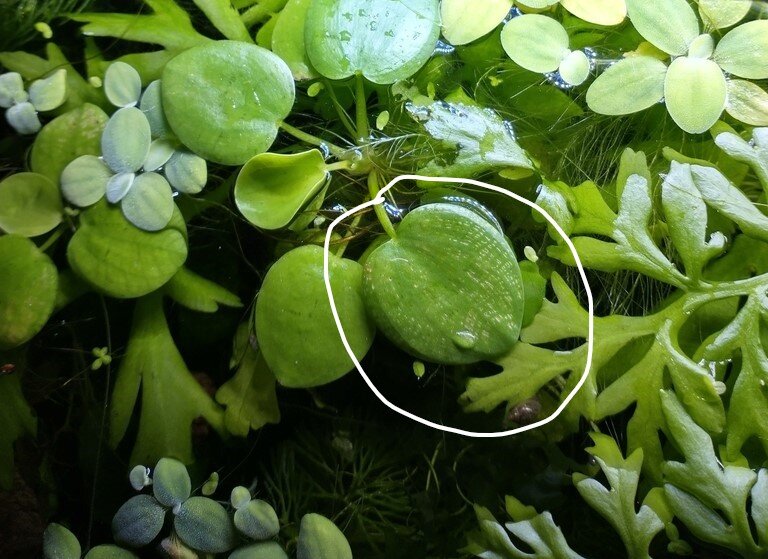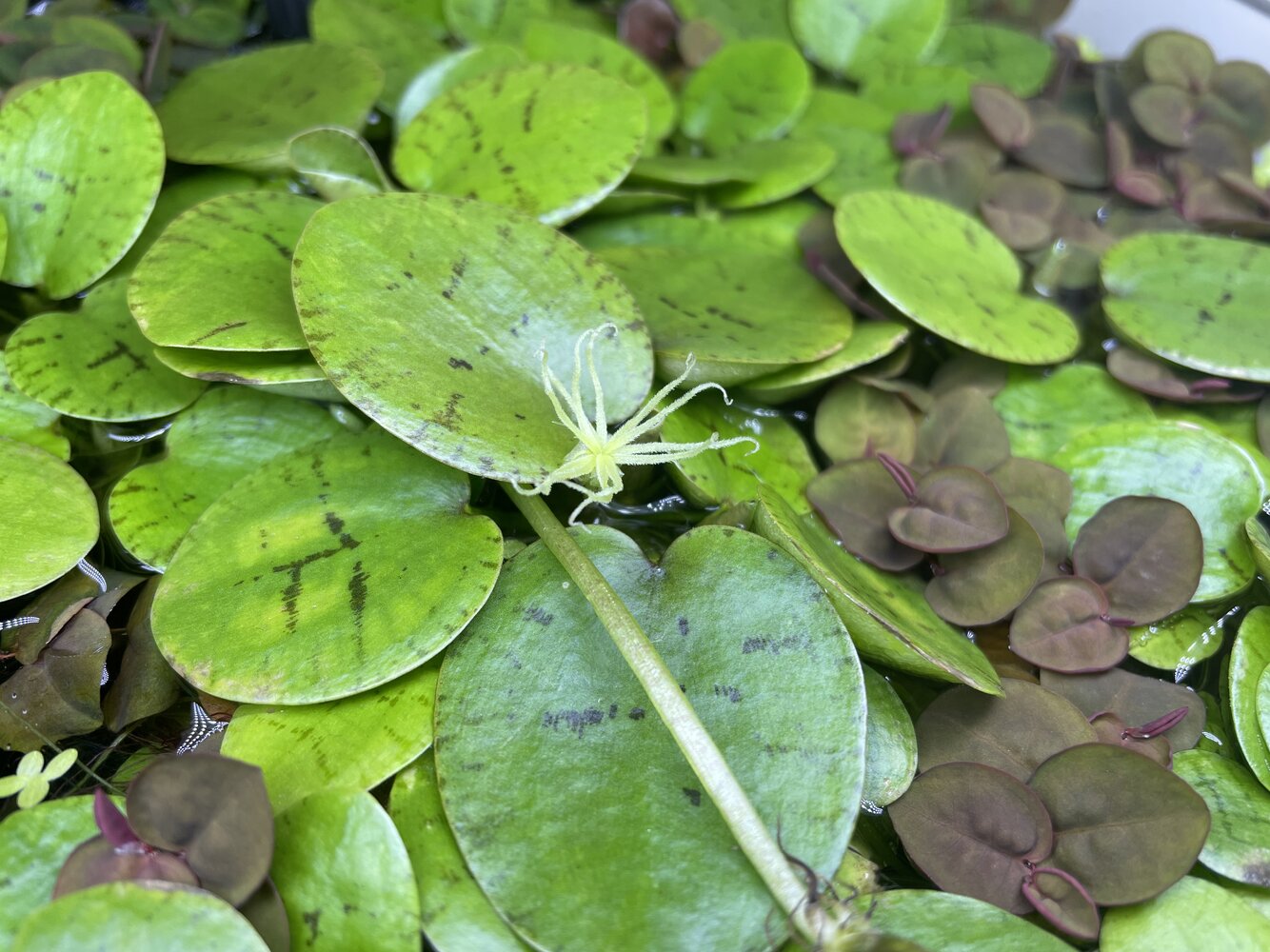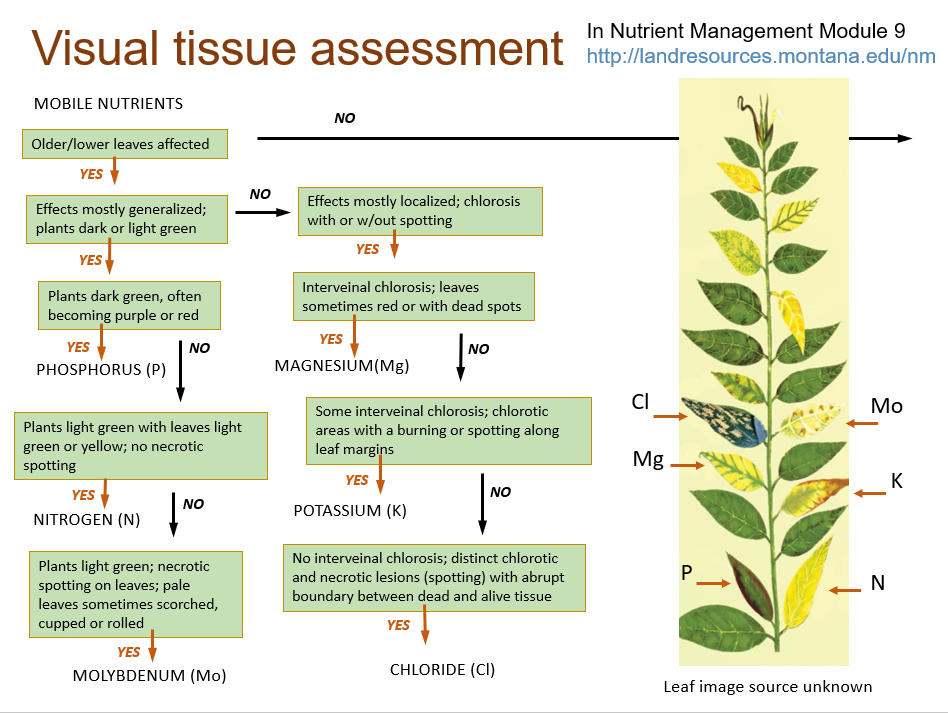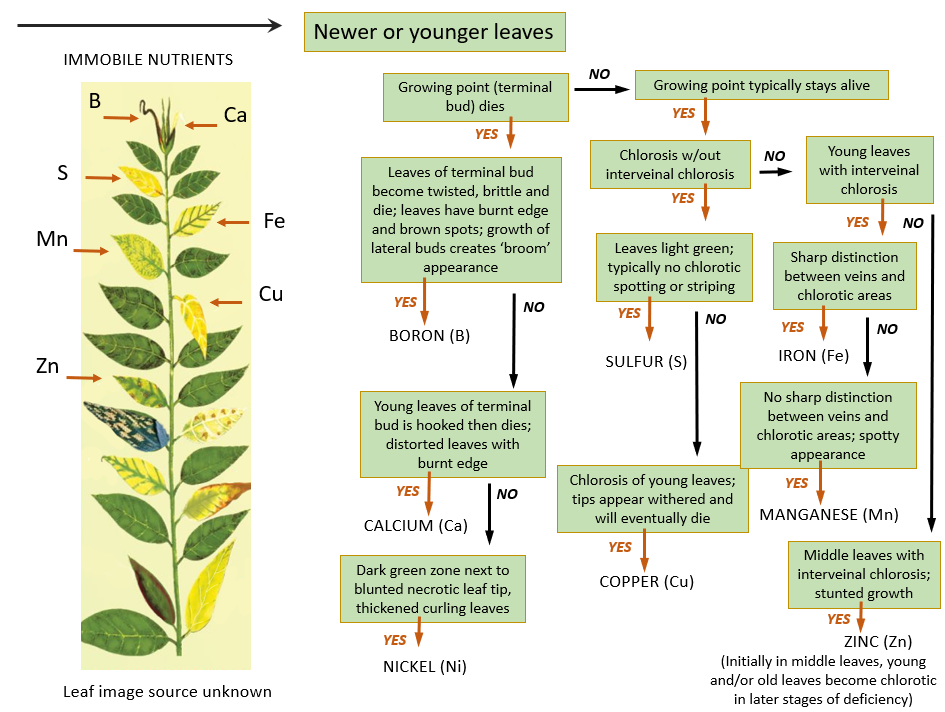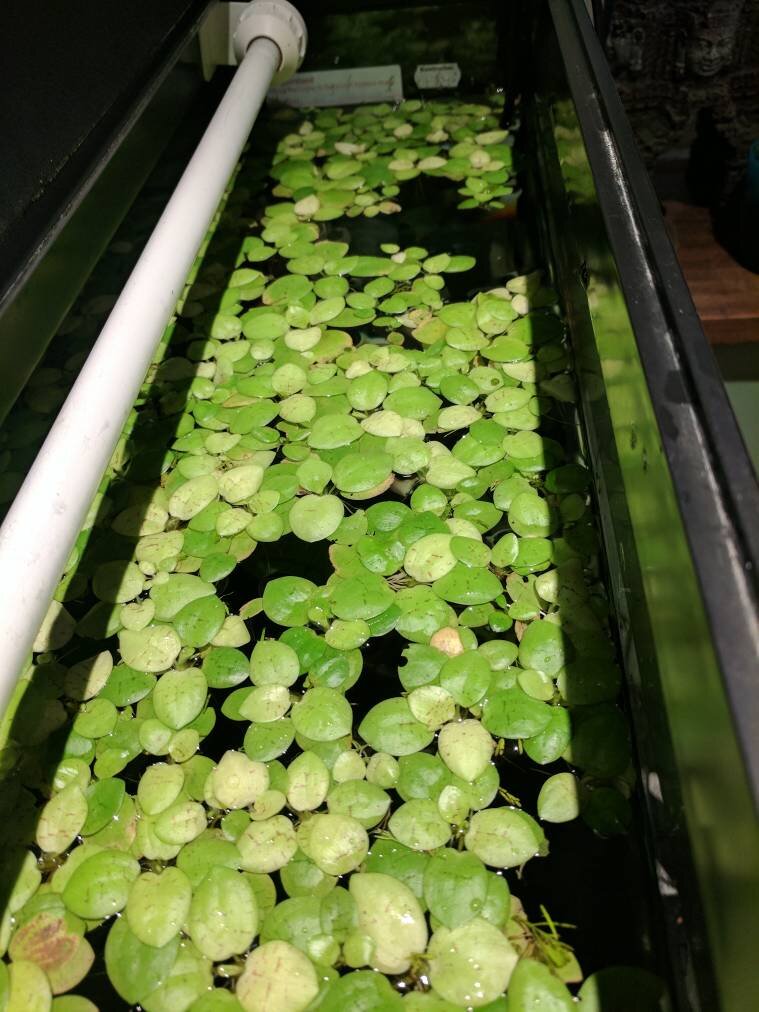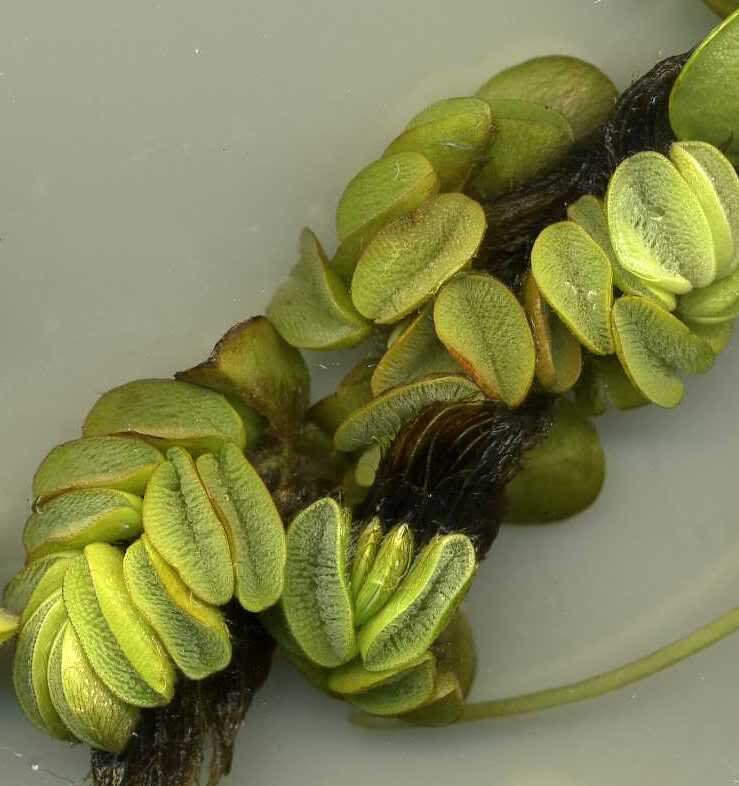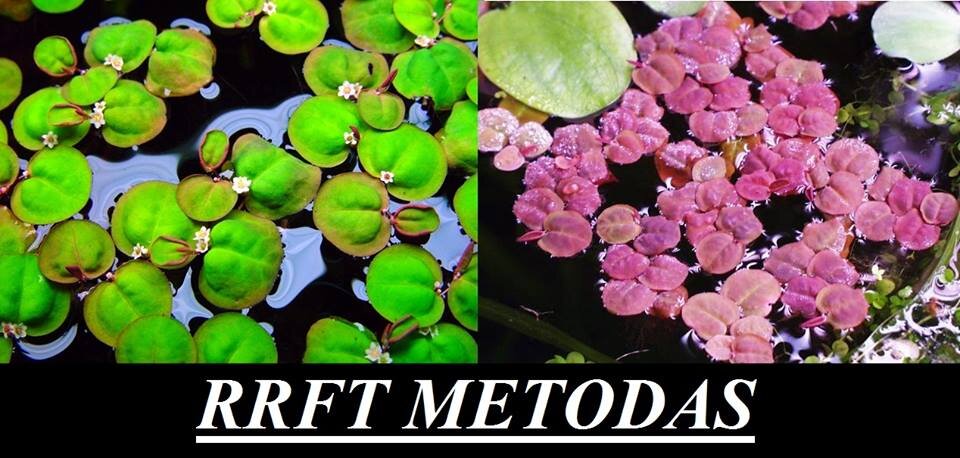What is the “Duckweed Index” all about?
I’ve never written a proper “Duckweed Index” article, but, prompted by @GHNelson, I’ve written a short introduction. I’ll break it up into a series of posts (of which this is the first), mainly to avoid author (and reader) fatigue. There is a table of contents (for this thread) is at the bottom of this post.
Fundamentally, the “Duckweed Index” is a simple technique <”to retain and improve water quality”>
Quick guide.
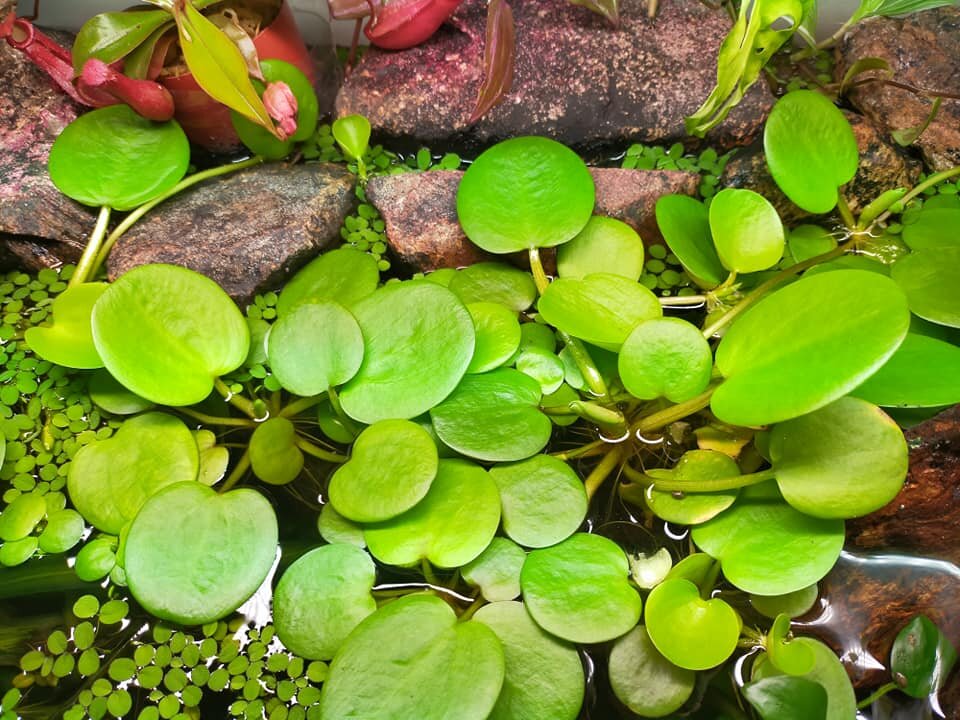
Fig 1: Healthy Amazon Frogbit (Limnobium (Hydrocharis laevigata) laevigatum), my preferred <“Duckweed”> for the “Duckweed Index”. Photo by @Cédric from <"The scientific background to the "Leaf Colour Chart"">
Please feel free to post in this thread, or PM me, with any suggestions for improvement or clarifications. I'll incorporate them into the thread as I fill in the details in subsequent posts.
Table of contents
cheers Darrel
I’ve never written a proper “Duckweed Index” article, but, prompted by @GHNelson, I’ve written a short introduction. I’ll break it up into a series of posts (of which this is the first), mainly to avoid author (and reader) fatigue. There is a table of contents (for this thread) is at the bottom of this post.
Fundamentally, the “Duckweed Index” is a simple technique <”to retain and improve water quality”>
Quick guide.
- To use the “Duckweed Index”, you watch the leaf colour, and growth rate, of a floating plant, and you only<" add nutrients">* when plant leaf colour and / or growth decline.
- “Amazon Frogbit” is now my preferred “Duckweed”.
- You use the <"UC Leaf Colour Chart”> as your visual reference for plant colour : <” The scientific background to the "Leaf Colour Chart">
- Plants require all <"fourteen essential mineral nutrients"> to grow, just in widely varying amounts.
- You can use the combination of <"leaf colour and plant growth rate"> as a measure of plant nutrient availability.
- Using the “Duckweed Index” water testing is not a requirement and you don’t need to try and accurately diagnose any nutrient deficiencies.
- Synergistic plant / microbe biofiltration can both create, and retain, high water quality.
- <"Bioassay"> and <"phytoremediation techniques"> have a sound scientific underpinning.
- The “Duckweed” functions simultaneously as both the bioassay organism and your “test kit”.
- When you thin the plants, you remove the nutrients they contain from the aquarium.

Fig 1: Healthy Amazon Frogbit (Limnobium (Hydrocharis laevigata) laevigatum), my preferred <“Duckweed”> for the “Duckweed Index”. Photo by @Cédric from <"The scientific background to the "Leaf Colour Chart"">
Please feel free to post in this thread, or PM me, with any suggestions for improvement or clarifications. I'll incorporate them into the thread as I fill in the details in subsequent posts.
Table of contents
- <"Quick Guide and ToC">.
- <"The Leaf Colour Chart">.
- <"Testing for fixed nitrogen">.
- <"The other mineral nutrients">.
- <"Fertilisers and the Duckweed Index">.
- <"The "aerial advantage" and why it is so important">.
- <"Why a rooted emergent plant would have been optimal">.
- <"Phytoremediation">.
- <"When the Duckweed Index breaks down">.
- <"and why we need to talk about iron (Fe)">.
- <"We've talked about iron deficiency, but what are going to do about it?">
- <"Plant available iron (Fe) and pH">.
- <"What is the future for the Duckweed Index?">
- <"What is the future for the Duckweed Index II, is it a mix of floaters?">
- <"References and some background reading">.
cheers Darrel
Last edited:


